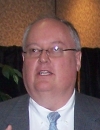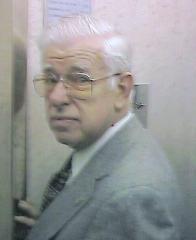Next Meeting - Tuesday, March 6 - CRAIG BUTLER is the Program Host, and he will introduce Jon Callaway from the American Transmission Company. He will tell us about the new power lines currently going up on the Beltline and down Hwy 39, and how it will impact all of us. It's not just putting up a pole and stringing a wire, but we are used to having the TV work and the lights stay on.
Last time, Pres. JIM opened the meeting, we sang, and LINDA prayed. TT JACK HEIM auctioned off an anonymous box, and then PADDHE HEINEN drew DALE MUELLER's name for a second donated prize. Couldn't tell what was in either one. [Web Ed Note: Box was from Fromagination, DALE's prize was a Fromagination gift card. Both donated by PADDHE.]
GAIL STIRR reported that Cycle For Sight raised over $5K last Saturday for vision research. Our MCLC team, led by GAIL and LINDA, was responsible for $300 of that. Thanks to all who participated, one way or another.
Lots of fundraising going on. LINDA still has fruit cake, trail mix, granola and chocolate almonds. Pres. JIM says our Flower Sale will be on April 12 April 23, the depot will be at the Edgewater, and full info will arrive shortly. SCOTT GROVER still needs some help on the last two Kohl Center games.
JOHN JENSON announced that the Eye Bank Golf Outing will be at Cherokee CC on Mon. June 11.
Our speaker, Kati Sullivan from the Red Cross, told us some extremely important things about a new version of CPR. It can only be used in one set of circumstances - when you actually witness an adult (someone who is past puberty) collapse. You should: check the victim for normal breathing for 10 seconds - put the side of your face almost touching theirs, listen, feel any breathing against your face - gasps are not normal breathing. Tap on their shoulder and shout “are you okay.” Make sure airway is open (tip head back). Call 911 if no response. Then, if unresponsive and not breathing, start chest compressions.
2) Place the heel of one hand on center of victim's chest. Place heel of other hand on top of first, lacing fingers together. Keep arms straight, your shoulders directly above hands. Push hard and fast, compress at least 2 inches, 100 times per minute. Let chest rise before next push. Keep it up. Count out loud and keep count. Don't stop if you can help it, unless you see obvious sign of life (breathing), until someone else can take over or an AED (Automated External Defibrillator) is ready to use.
3) If an AED is available, unpack and turn on. FOLLOW THE INSTRUCTIONS precisely. Wipe chest dry, attach pads, plug in connector if necessary, make sure no one is touching victim, push the ANALYZE button. (The machine will tell you whether a shock is necessary.) If it advises a shock, push the “SHOCK” button. Then follow the AED prompts and resume compressions. The AED detects the situation and issues appropriate instructions.
Note that a “heart attack” is not cardiac arrest. Improper heart function produces symptoms and distress and should be attended to promptly. Cardiac arrest occurs when the heart stops beating, and for an adult there is only about 3-4 minutes to get started. Children have a few minutes more.
You should have been there - this is information that can save a life. While your editor was preparing this Tale, there was a story in the paper about an incident at the Kohl Center, in which first responders revived a young man who was in cardiac arrest. The story followed the presentation Kati gave us almost exactly. They did what she said to do, and it worked! This was a wonderful example of how much it means to have the right people and the right equipment in the right place at the right time.
The editor thinks maybe we should have another program to refresh the information we got, and perhaps to demonstrate an AED. In addition, anyone who has an opportunity to take a training session sometime, somewhere, on CPR should do it. Among other things, the instructor can give the scientific basis for the recommended course of action, so that you get some of the “why” along with the vitally important “how.” JACK HEIM was responsible for bringing us this program.

